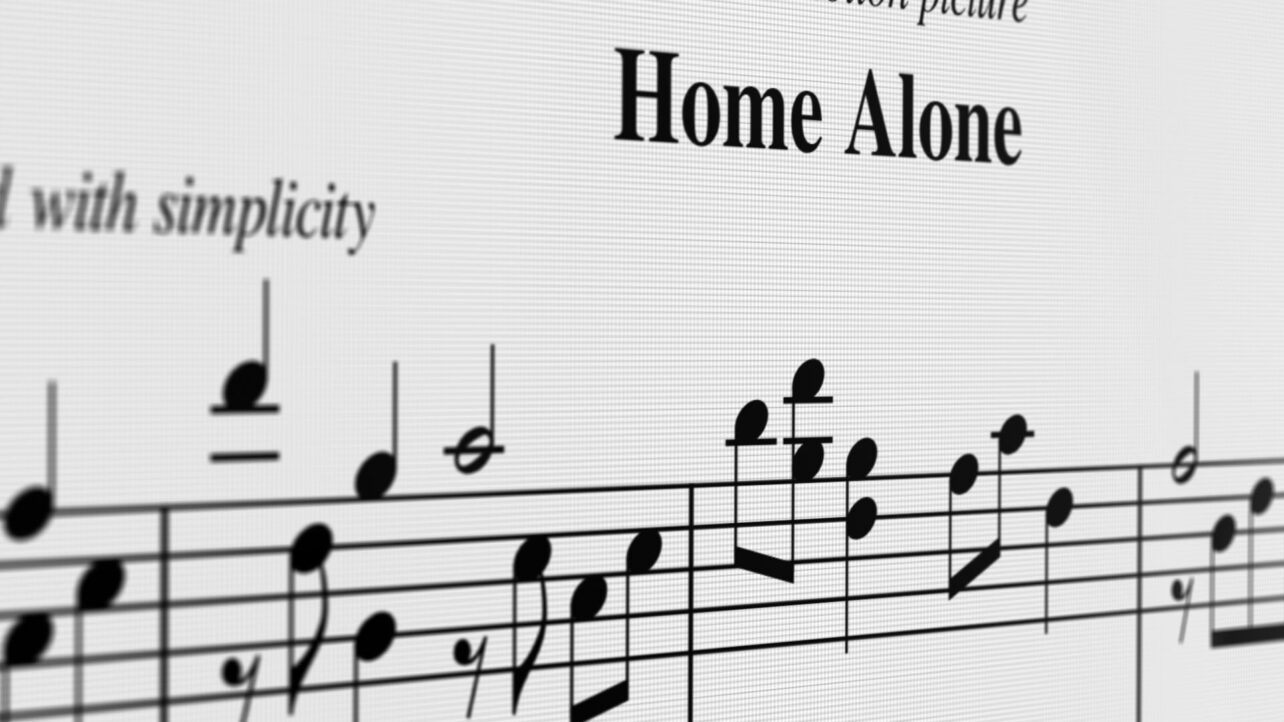The Holiday Season is upon us, making it the perfect time to watch a Christmas film. Visually, Christmas films may have the easiest time establishing the genre to the audience. If you have an exterior shot of the town square on a sunny morning, it could be any time of the year. But present a Christmas tree with a few decorations spread across the shops, and well, it’s December.
However, in addition to lights, trees, decorations, and snow, another important player in Christmas movies is the score. And some would argue the music may be more recognizable than the visual elements themselves.
Christmas music can instantly lift spirits and set the tone for the festive mood. But what are the elements that make a Christmas film score sound festive? This led me to wonder: what creates that iconic Christmas sound? Let’s explore!
Sleigh Bells – The Quintessential Christmas Sound
Most Christmas film scores include a typical orchestra augmented with additional instruments that evoke the holiday spirit. Amid the strings, brass, and woodwinds ensemble, crucial percussion instruments- sleigh bells in particular- add sparkle to the timbre.
Why sleigh bells, you might ask? Historically, sleigh bells were attached to horses to alert pedestrians to oncoming sleighs. In the context of Christmas, these bells became synonymous with Santa Claus, who is traditionally depicted delivering presents in his sleigh, thereby becoming a symbol of Christmas.
The Main Title of “Elf” showcases a splendid opening where the sleigh bells unmistakably signal the Christmas spirit.
In addition to sleigh bells, other instruments symbolize the Christmas spirit, such as tubular bells, tambourines, and triangles. Instruments that produce bell-like or twinkling sounds reminiscent of Christmas lights are secret ingredients in any festive film score.
Another commonly used instrument in festive scores is the glockenspiel. This tuned percussion instrument adds a sparkling quality to the texture.
To further enhance Christmas’s magical and fantastical nature, the celesta- resembling a small upright piano with tinier keys and a compact cabinet- produces a sound similar to a music box. Its tone closely mirrors that of the glockenspiel, resulting in a glistening effect.
Consider the scene from “A Christmas Carol” (2009), where Scrooge travels to his past and encounters his first waltz with his love interest, Belle. Before this romantic moment, we witness a party scene filled with uplifting music featuring sleigh bells on every beat. When Scrooge sets eyes on Belle, the tempo slows, and the music shifts to include wind chimes and a glissando on the harp, another instrument contributing to the glistening texture, along with the glockenspiel.
Some composers opt to use a choir in their score. This can be linked to caroling activities during the holiday season. John Williams, the composer for Home Alone, includes a choir in the main title “Somewhere In My Memory, ” which adds warmth to the overall sound.
Christmas Influences
Film scores centered around Christmas often draw inspiration from classical music that embodies the festive spirit. A notable example is Tchaikovsky’s The Nutcracker, a Christmas ballet about a girl who befriends a Nutcracker doll that comes to life on Christmas Eve to battle the evil Mouse King. The Nutcracker Suite, a world-renowned composition from this ballet, is widely associated with Christmas and has significantly influenced other Christmas-themed works.
An example of this influence is evident in the film Home Alone. A specific track in this movie is inspired by Tchaikovsky’s Nutcracker Suite, particularly the “Divertissement” section. When compared to John Williams’ music for Home Alone, the similarities are striking. Fortunately, this homage is legally permissible, as Tchaikovsky’s work is now in the public domain!
Back to the discussion at hand, we hear the tambourine and a glockenspiel in this track, similar to Tchaikovsky’s Divertissement. The hustle-and-bustle nature of this piece translates well to the scene, with the fast melodies reflecting the frantic feeling in the McAllister home. But adding those bell-type sounds within the phrases characterizes the music towards the feeling of Christmas.
Other classical works include Sergei Prokofiev’s Troika movement from his Lieutenant Kije. To me, this piece screams Christmas time! This is mostly due to the tambourine (symbolizing actual sleigh bells) and the recurring melody, which you can hum along to. Festive, right?
Major Keys and Memorable Melodies
Now we have the instrumentation down, what about the actual musical material?
Most, if not all, Christmas music is in a major key. This denotes the musical character and language, and major keys give a very positive feeling. Minor keys, on the other hand, sound rather sad. Some composers may opt to use a minor key tonality for brief moments to create a sense of mystery or ambiguity.
Danny Elfman’s score for The Nightmare Before Christmas employs both major and minor tonalities to reflect the Christmas and Halloween spirit within the film. It also has a quirky score full of playful instrumental moments.
Melodies in Christmas music are often catchy and memorable, enabling viewers to sing along and remember them easily. A prime example is the main title theme from “Home Alone,” which stands out as one of the most unforgettable melodies in film.
However, these special textures and memorable tunes wouldn’t be complete without the foundational support of the string section. Strings play a pivotal role in Christmas music, often carrying the main melodies. This family of instruments provides a rich and warm background that is essential to the overall sound.
Complementing the strings, the twinkling timbres of instruments like the glockenspiel and the celesta add a sparkling touch. Additionally, woodwind instruments are frequently used for melodic ornamentation, further embellishing and enhancing the melodies.
For more on audio, check out these articles:
Algorithmic vs Convolution Reverb: What’s The Difference?
Beeps, Boops, and Battle Cries: The Most Recognizable Sounds in Gaming

